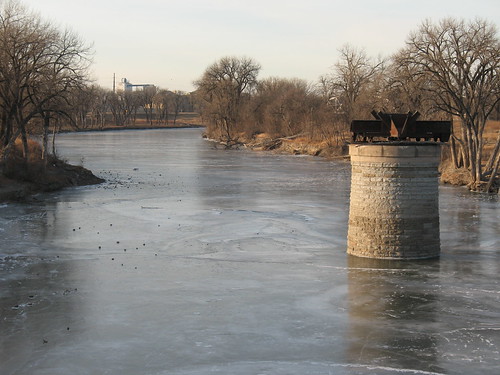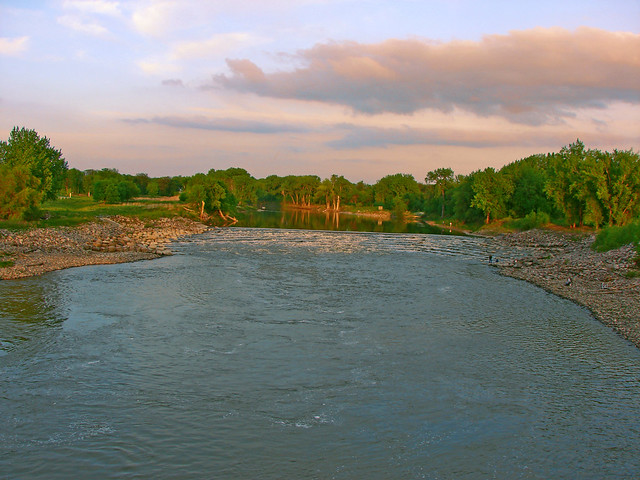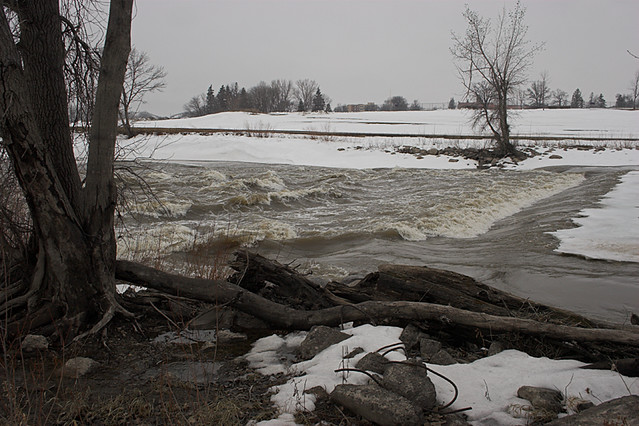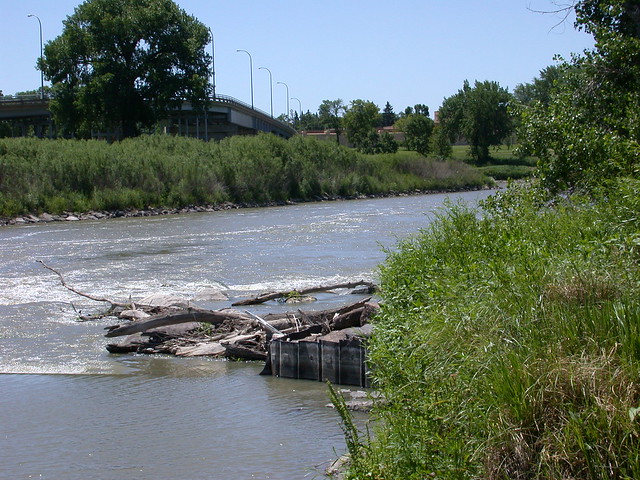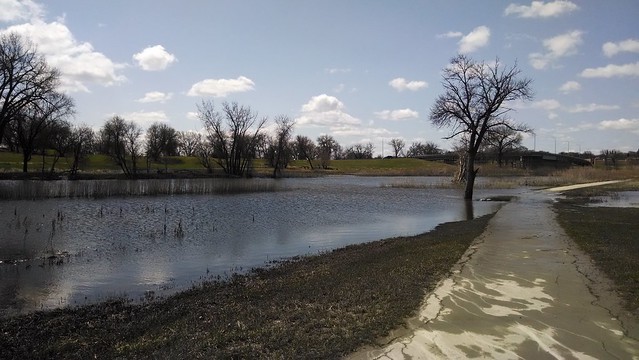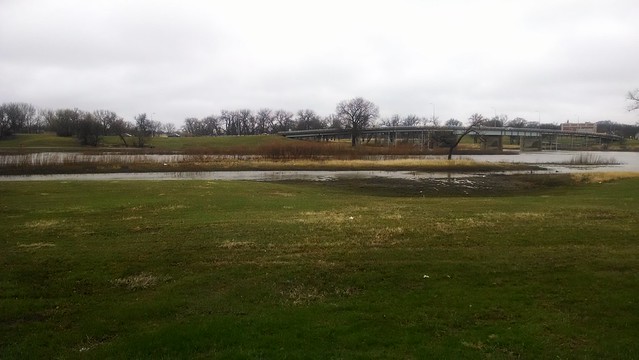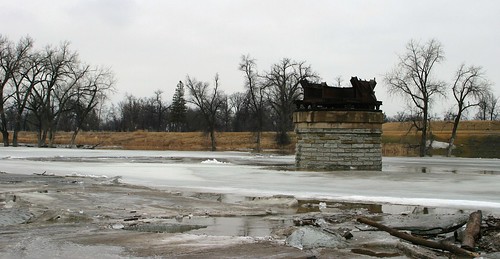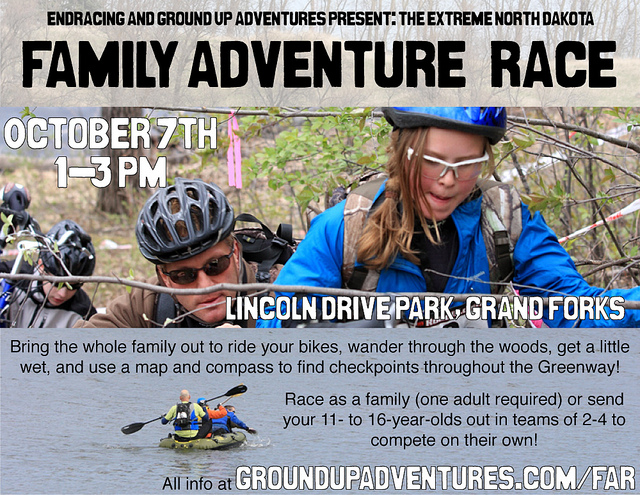Tag: grand forks
Red River of the North at Grand Forks
Correlating stage and discharge with photos. A work in progress.
Data are from the gage at Red River of the North on Sorlie Bridge. Photos are in order of stage height, increasing.
| Stage | Red River/Red Lake River Confluence | Downtown/Mt. Haga | Riverside Dam |
|---|---|---|---|
| 16 ft |
Gage height ~16.2 ft, no discharge available. 2011-12-10 |
Gage height ~16.3, discharge ~2000 cfs. 2009-09-25 Gage height ~16.5 ft, no discharge available. 2011-12-05. Gage height ~16.9 ft, discharge ~3100 cfs. 2008-06-04. |
|
| 17 ft |
Gage height ~17 ft, no discharge available. 2010-03-13. Gage height ~17 ft, discharge ~3300 cfs. 2012-06-28. |
Gage height ~17.4 ft, discharge 3700 cfs. 2010-09-04. |
|
| 18 ft | |||
| 19 ft | |||
| 20 ft | |||
| 21 ft |
Stage ~21.8 ft, discharge ~10,100 cfs. 2014-05-23. |
||
| 22 ft | |||
| 23 ft | |||
| 24 ft | |||
| 25 ft | |||
| 26 ft |
Gage height ~26.0 ft, discharge 17,800 cfs. |
||
| 26.5 ft |
East Grand Forks bike path under Sorlie bridge is underwater. |
||
| 27 ft |
Gage height ~27.25 ft, discharge 19,000 cfs. |
||
| 28 ft | |||
| 29 ft | |||
| 30 ft | |||
| 31 ft | |||
| 32 ft |
Gage height ~32 ft, no discharge available. 2009-03-23. |
||
| 33 ft | |||
| 34 ft |
“East Grand Forks…4th St underpass at Gateway Drive (HWY 2) closes” (NWS). |
Quick Thoughts
- The intersection of the north-end bike path (north of Gateway) with 1) North Washington Street and 2) Mill Road are especially bad.
-
There is no official way to cross the English Coulee on the north side of Gateway, but there is a desire line, which can even be seen in the satellite photo.
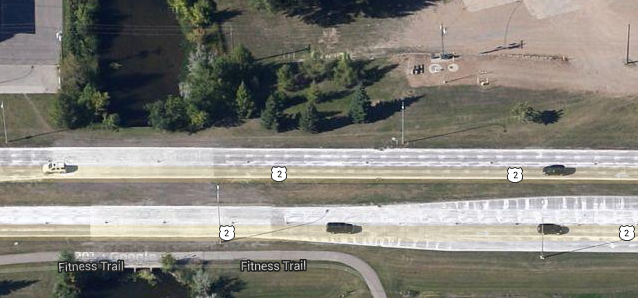
-
Crossing 42nd Street is hard, too.

- It would be sweet if there were a pedestrian connection across 42nd St from 11th Ave S to the Alerus Center.
Grand Forks School District is Parking-Hungry
A detailed story in the Herald yesterday: http://www.grandforksherald.com/content/grand-forks-school-district-parking-lot-project-would-evict-apartment-residents
Best of Craigslist
Here at Grand Forks Streets HQ, we have a pretty low bar when it comes to the “best” local online posts and stories. So rather than a list of recent articles you may have seen in the Herald anyway, here are some local Craigslist postings relating to streets:
Cycling through the Blizzard
Eight inches of snow? No problem:
The Grand Forks Herald has a thing for putting winter cyclists on the front page–check out this one of Chase Christenson from January 2010:

Matt Burton-Kelly waits for traffic at the intersection of University Ave. and N. 25th St. as he bikes to work at EERC

Professor Gordon Iseminger of the History Department at UND pedals across campus during Thursday’s snowfall. (Eric Hylden/Grand Forks Herald) (15 Jan 2016)
Saying No
I recently got back comments on a version of my dissertation draft, so I will again have little time to do much. Things I’ve said ‘no’ to recently: setting up a general Grand Forks online forum and hosting a local nordic ski race (because we don’t have any in town). If anyone is interested in doing either of these things, go ahead, because I can’t invest the time in them right now.
Flyer: Family Adventure Race
Flyer I made for the family adventure race this fall in Grand Forks, ND. Background photos are by Flickr user gfpeck with permission. Information on the race itself can be found at www.groundupadventures.com/far
Mosh Pit
In case you’ve missed them, here are some stories that have been in the Grand Forks news lately:
-
The new Fargo bicycle lanes are being kept, but some people always disagree. Now we just need to teach people not to ride on the sidewalk.
- Even the kids are getting involved in the streets planning process now.
- Grand Forks is expanding the Renaissance Zone to encourage more businesses to improve downtown.
- Move over, New York City, we have our own reckless drivers now!
- What’s up with a new Grand Forks I-29 interchange? Yeah, we don’t know either.
Additionally, we’ve had a wonderful collection of drug lords, prostitution rings, child pornography arrests, and needless automobile deaths in the past few weeks. Growing city? Certainly. In need of another WalMart? Probably not.
Living in the Street
At a community gathering some time ago, the subject of “bad drivers” came up. To be fair, some of the driving issues people brought up were related more to bad engineering or design decisions, but most of the irritation seemed to stem from the idea that (other) drivers in Grand Forks are generally selfish. This may or may not be more true here than in other cities of this size, but I think this line of thinking is due to two assumptions: first, that each of us is (obviously!) a better, more considerate driver than anyone else on the road, and second, that each of us is (obviously!) on a more important errand than all those other people. This is human nature, but how can we change it?
Gary Howe addresses this idea in a recent blog post “Traffic is a social problem” and what’s needed is “an outbreak of civility.” The idea (woven in with some others) is that “traffic” is something that’s an outgrowth of the separation from other people that we feel (and perhaps want) when we’re in the public space. So we box ourselves up in cars. We don’t make eye contact with other cyclists when we’re on bicycles. We shuffle quickly inside when we get home from work. We grill out and eat dinner in the back yard rather than the front. The public space is left to those who have to be there, not those who have somewhere else to be.
The natural solution to this, as expressed in the above blog post and others, is to make the street a more enjoyable and more natural place to live. By simply being out there and using the space, we force people to interact and, hopefully, to develop some sort of community. Once the community exists, everyone shares a social contract. You wouldn’t track mud through a friend’s living room, so why would you honk your car horn outside your neighbor’s house early in the morning? Why would you speed down a street that you know your neighbors’ children might be playing on? Why would you thump your bass when you see your neighbors eating dinner in the front yard?
There are a million different ways to build community, not all of which are as difficult as walking across the street with a strawberry pie. The links below (and the blog post linked above) outline a number of them. Which ones should we try in Grand Forks?
– Ten Ways to Love Where You Live
– Creative Communities Toolbox
– Placemaking 101
Update 2013-07-03: Another good discussion along these lines is given by Shane Phillips about Safe Routes to School.
The problem here, if it is indeed a part of the problem, is ultimately a lack of community. Most people would never harm a child, but when people don’t know the members of their community they can’t always trust them by default. It may be that school districts or another credible institution can step in to bridge the gap and provide a framework for continued growth.

